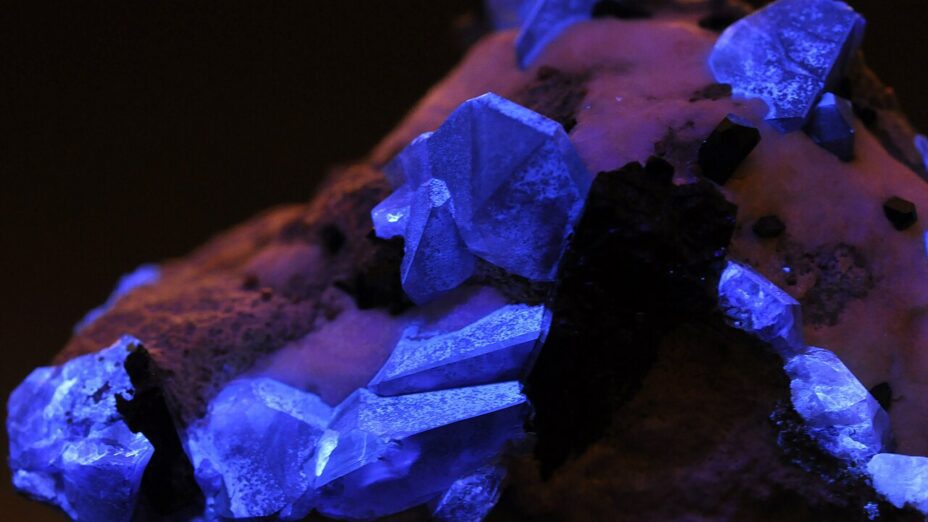
One of the rarest gemstones in the world is only harvested en masse at the southern end of the Diablo Range.
It’s known as benitoite, and in 1985, it became the state gemstone of California.
According to the Benitoite Mining Company, the deep blue gems are found in as many as nine other locations worldwide, but none of the locations commercially produce gem-quality crystals.
It’s agreed that James M. Couch was the first prospector to discover the crystals in New Idria, CA—but he initially believed them to be sapphires.
Berkeley-based mineralogist Dr. George D. Louderback later differentiated the stones with a Moh’s hardness test. Sapphires are known to be much harder than most gemstones, and the gems he tested were much softer.
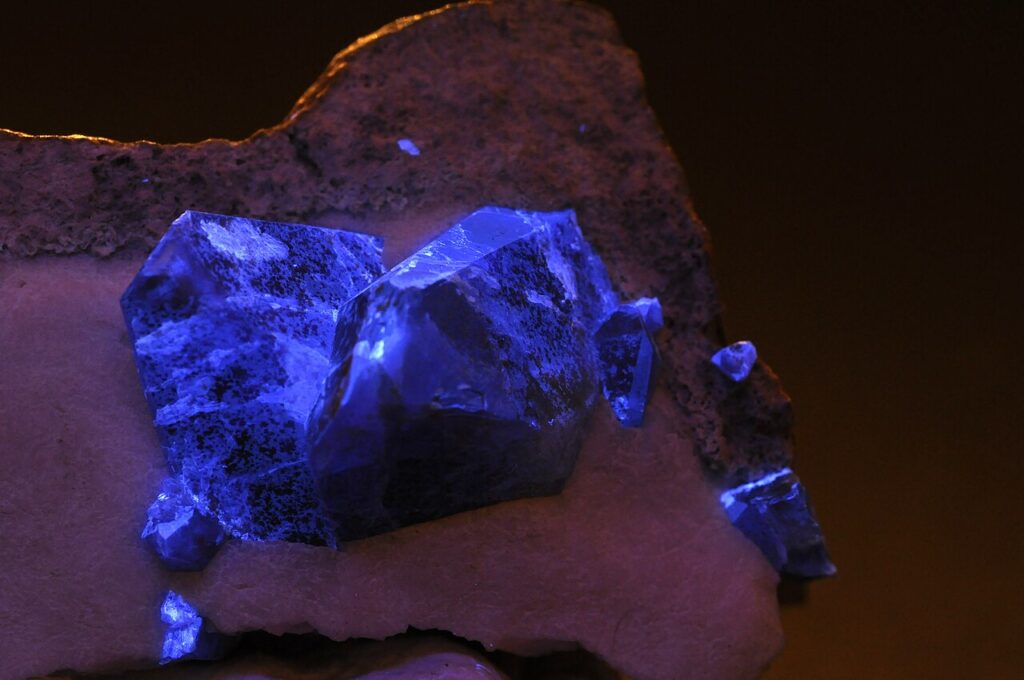
Benitoite crystals fluoresce under ultraviolet light. Photo by Géry Parent | CC0
Further testing proved the makeup to be a barium titanium silicate. Eventually, the name benitoite was chosen because the samples were found near the headwaters of the San Benito River.
Those headwaters aren’t far from the accompanying San Benito Mountain, the highest peak in the Diablo Range at 5,267 feet, which is known for its rugged landscape.
Imagine driving up Mount Diablo from bottom to top, but with over a dozen stream crossings and without paved roads. With little or no cell phone coverage, you should plan your trip carefully.
Access to the mountain is limited because of the abundance of naturally occurring asbestos found in the soil from fascinating serpentine barrens, which are home to many rare plants.
A vehicle permit and a special Serpentine Area of Critical Environmental Concern (ACEC) permit from the Bureau of Land Management are required to visit, and visits are limited to six times per year in the serpentine area.
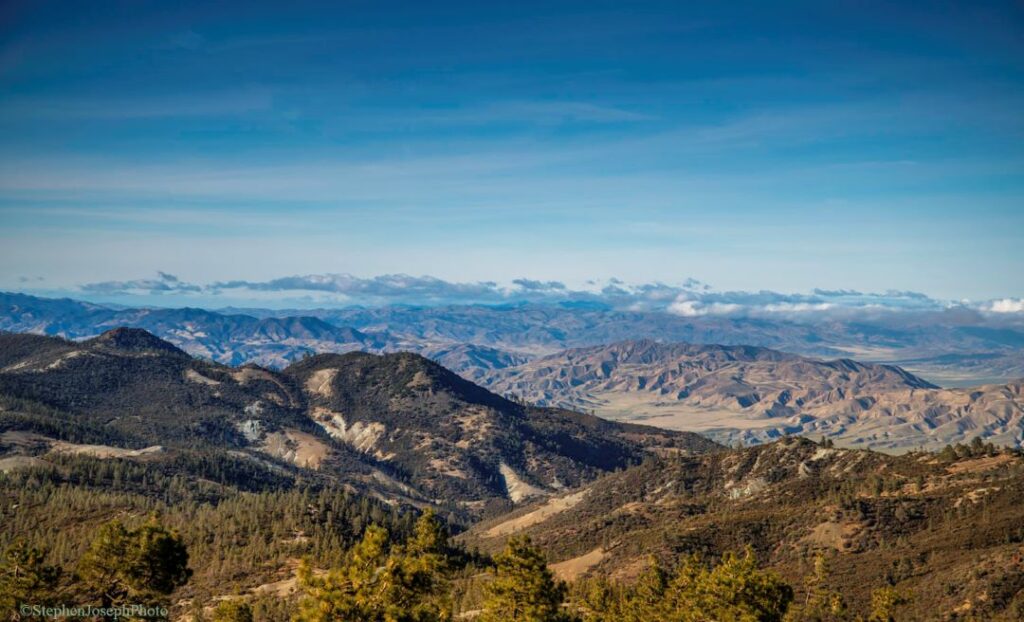
View from San Benito Mountain. Photo by Stephen Joseph
Shortly after benitoite’s discovery, mining operations began, but little is known about just how much benitoite was recovered.
Benitoite has other, more striking qualities in addition to its rarity that makes it special. Benitoite fluoresces a bright sky blue under UV lights and has a higher refractivity index than diamonds, which makes it especially sparkly.
Benitoite gems regularly sell for over $5,000 a carat and some go for double that rate because of these features. The largest known example weighs in at over seven carats.
The Benitoite Mining Company has gone through a number of owners over the decades, and its Benitoite Mine near Coalinga is now open to the public for recreational gem hunting.
But there’s more than just benitoite to be found in the area. Benitoite is often found amongst other rare minerals, such as natrolite, neptunite, joaquinite, and serpentine, and albite.
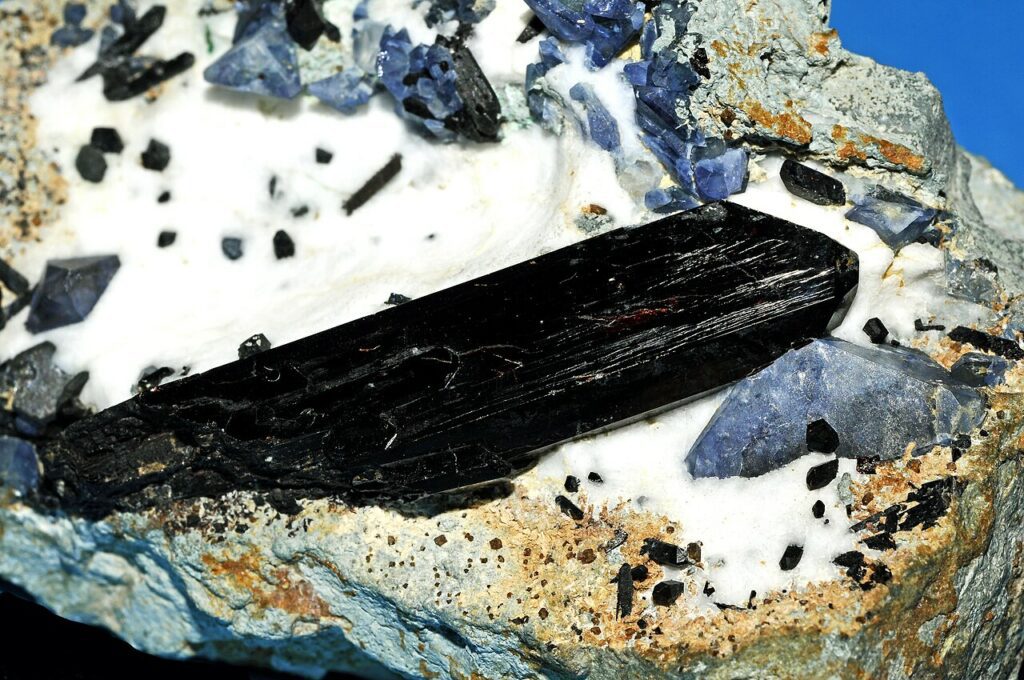
Benitoite is often found with other rare minerals and gems like the prominent neptunite crystal in this photo as well as joaquinite and natrolite. Photo by Géry Parent | CC0
Mercury and asbestos were mined nearby, creating toxic runoff, and several small areas are now listed as EPA Superfund sites.
The impacts of these mining operations tell a story of the long-term impacts of mining, and that story is intertwined with that of benitoite.
The mercury mines in New Idria were the second most productive in the country next to the New Almaden mines near San Jose and were all deeply important to the country’s industrial development at the time.
Gemstones, like diamonds, sapphires, and rubies, often have commercial applications, but maybe benitoite was better off left in the Diablo Range.
If you’re interested in reading more about the more recent history of New Idria, Frances K. Woods wrote about living there in her book Quicksilver Chronicles.
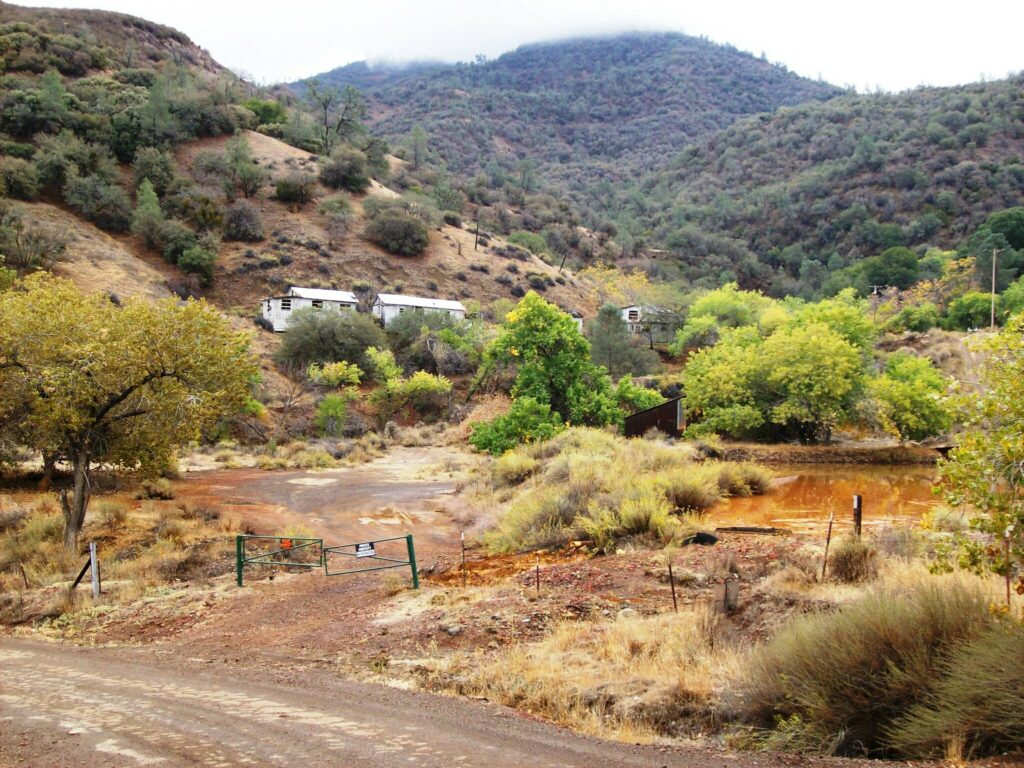
The New Idria ghost town and the orange runoff of San Carlos Creek, San Benito County, California. Photo by Matthew Lee High | CC BY-NC
In it, she writes extensively about the San Carlos Creek that runs orange through New Idria and the local efforts to get it cleaned up as a Superfund site.
In one of the many “San Carlos Creek Updates,” she writes:
The creek has been unusually milky-murky lately, which is an indicator that the recent rains have churned up a chemical reaction with all the heavy metals of alum, boron, methylmercury, iron, sulfur, manganese, and on and on that pour out of the old New Idria mine shafts.
You can reach San Benito Mountain and BLM’s Clear Creek Management Area from the south on Coalinga Road. Check for permits on the BLM’s Clear Creek Management Area page.
Peakbagger.com has trip reports that are helpful in planning a trip to San Benito Mountain.
The old mining town of New Idria is normally accessible through the Panoche Area on the New Idria Road, but check road conditions; the road was washed out in the Vallecitos Valley last year.
Save Mount Diablo has expanded its reach to cover more of the Diablo Range and eventually plans to protect as much of it as possible.
Please consider becoming a member or donating today to help us defend the Diablo Range.

